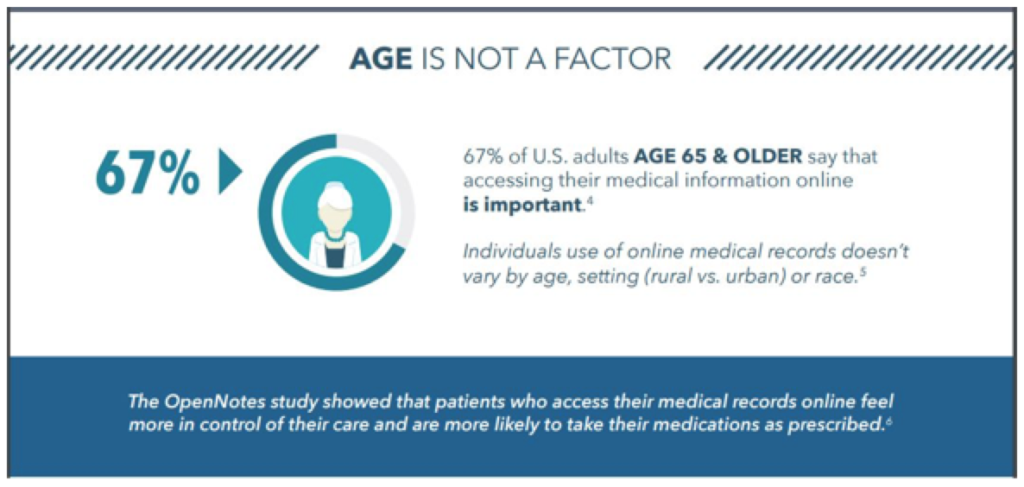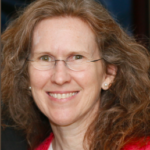 I regularly read Dr. John Halamka’s Geekdoctor blog to keep up with the latest health IT (HIT) news. Dr. Halamka, Beth Israel Deaconess CIO, is an HIT policy expert, traveling around the U.S. and the rest of the world talking about HIT. His July 6th Geekdoctor blog post includes an overview of the recently released Quality Payment Program (QPP) proposed rule which was presented in the July 3rd Acumen blog post. In a June 22nd tweetchat policy update Dr. Halamka also talks about the 2018 QPP proposed rule and the 21st Century Cures Act. In addition to MIPS and MACRA perspectives in the Geekdoctor blog and the tweetchat, I am always interested to hear about HIT innovations on the horizon. Here are some recent highlights.
I regularly read Dr. John Halamka’s Geekdoctor blog to keep up with the latest health IT (HIT) news. Dr. Halamka, Beth Israel Deaconess CIO, is an HIT policy expert, traveling around the U.S. and the rest of the world talking about HIT. His July 6th Geekdoctor blog post includes an overview of the recently released Quality Payment Program (QPP) proposed rule which was presented in the July 3rd Acumen blog post. In a June 22nd tweetchat policy update Dr. Halamka also talks about the 2018 QPP proposed rule and the 21st Century Cures Act. In addition to MIPS and MACRA perspectives in the Geekdoctor blog and the tweetchat, I am always interested to hear about HIT innovations on the horizon. Here are some recent highlights.
What is coming down the HIT pike?
Despite a lot of healthcare uncertainty in D.C., it sounds like legislation and regulations will focus on improving HIT interoperability and usability. Interoperability is key to value-based health care activities like care coordination, population health management, precision medicine, and patient and family engagement. Requiring EHRs to have application programming interfaces (APIs) will improve EHR usability by integrating general health applications (apps). Instead of EHR companies developing new integrated features, traditional EHR systems will connect with a personalized set of apps that improve the user experience.
Putting health care consumers in the HIT driver’s seat
Apps can drive big change similar to the way they have impacted trends in online shopping where eCommerce is growing by 23% per year. Apps make it easy for consumers to shop online; 90% of Americans now shop online at least once a year and 80% shop online at least monthly. An Amazon box arrives on my doorstep once or twice a week since I can now shop on my iPhone and buy with one swipe. This is quite a change from 10 years ago when online shopping was complex and time consuming. Do you remember putting in your mailing address and credit card information for every purchase? Sending gifts to multiple addresses was a nightmare!
A recent Health IT.gov infographic on “The Value of Consumer Access & Use of Online Health Records” illustrates the current status of consumer engagement in HIT. As illustrated in this infographic, HIT that supports easy, secure access for patients improves patient engagement and supports person-centered care. Improvements in patient access to HIT are needed to close gaps in the exchange of healthcare data. As seen in Figure 1 below, most of us are likely to be impacted by these lapses in health information exchange.

Figure 1 (section of the infographic from HealthIT.gov)
In addition, as illustrated in Figure 2, disconnected HIT is more likely to be a hardship for CKD and ESRD patients since they are receiving care from a variety of providers.

Figure 2 (section of the infographic from HealthIT.gov)
When given the opportunity to access and manage personal health data online, health consumers are taking advantage of it more and more. 70% of individuals want online access to health data and 55% of people given online access use it. In fact, studies show that patients viewing online data are more motivated to do something to improve their health.
Given opportunity, people will also take action to fill in HIT information gaps by sharing data and using apps to store, manage, and visualize data. This is not just for millennials; older patients are participating in use of online HIT, as shown in Figure 3.

Figure 3 (section of the infographic from HealthIT.gov)
Patient data stewards
Traditionally a data steward manages a database to maintain data quality. A data steward oversees policies for data storage and definitions for discrete data elements. A steward controls data entering the database storage and oversees good records or metadata to track and identify all data elements.
In his blog post, Dr. Halamka suggests that patients might become data stewards for their own health-related data. Easy, secure, and timely access to online health data would empower patients to become the information intermediaries for personal health data. A patient would have the power to move health data among providers, bridging some of the existing, costly information gaps. New healthcare apps will make it easier and safer for regular people to share data.
Filling the gaps with apps
Fast Company recently published a story about hospitals using iPads during an acute hospital stay. In the example given, a patient waiting for a heart transplant uses an iPad to message nurses, order magazines, make notes, look at his med list, look up medication side effects, and review his medical record, including labs. Apple and other technology companies are committing to improving healthcare information management through hardware and software innovations. The Fast Company article quotes small software company Tonic Health CEO, Sterling Lanier, who says that companies like his are developing user-friendly health care apps for data visualization and management. Big companies like Apple are partnering with traditional HIT systems like Epic to provide apps that interface with a traditional EHR platform.
What’s in your phone?
Even though I don’t have a complicated personal health care landscape to navigate, I regularly experience HIT information gaps. I’ve waited for test results to come in the U.S. mail and have received my health data on an old fashioned CD. I’m an expert at telling my health history to every new provider. I’m ready to be a steward for my own health data and I’d love to have it at my fingertips on my cell phone. I’m looking forward to the day when I can share my personal HIT with a simple “share with 1-click” button. How about you?
 Dugan Maddux, MD, FACP, is the Vice President for CKD Initiatives for FMC-NA. Before her foray into the business side of medicine, Dr. Maddux spent 18 years practicing nephrology in Danville, Virginia. During this time, she and her husband, Dr. Frank Maddux, developed a nephrology-focused Electronic Health Record. She and Frank also developed Voice Expeditions, which features the Nephrology Oral History project, a collection of interviews of the early dialysis pioneers.
Dugan Maddux, MD, FACP, is the Vice President for CKD Initiatives for FMC-NA. Before her foray into the business side of medicine, Dr. Maddux spent 18 years practicing nephrology in Danville, Virginia. During this time, she and her husband, Dr. Frank Maddux, developed a nephrology-focused Electronic Health Record. She and Frank also developed Voice Expeditions, which features the Nephrology Oral History project, a collection of interviews of the early dialysis pioneers.
Photo from www.canstockphoto.com




Leave a Reply